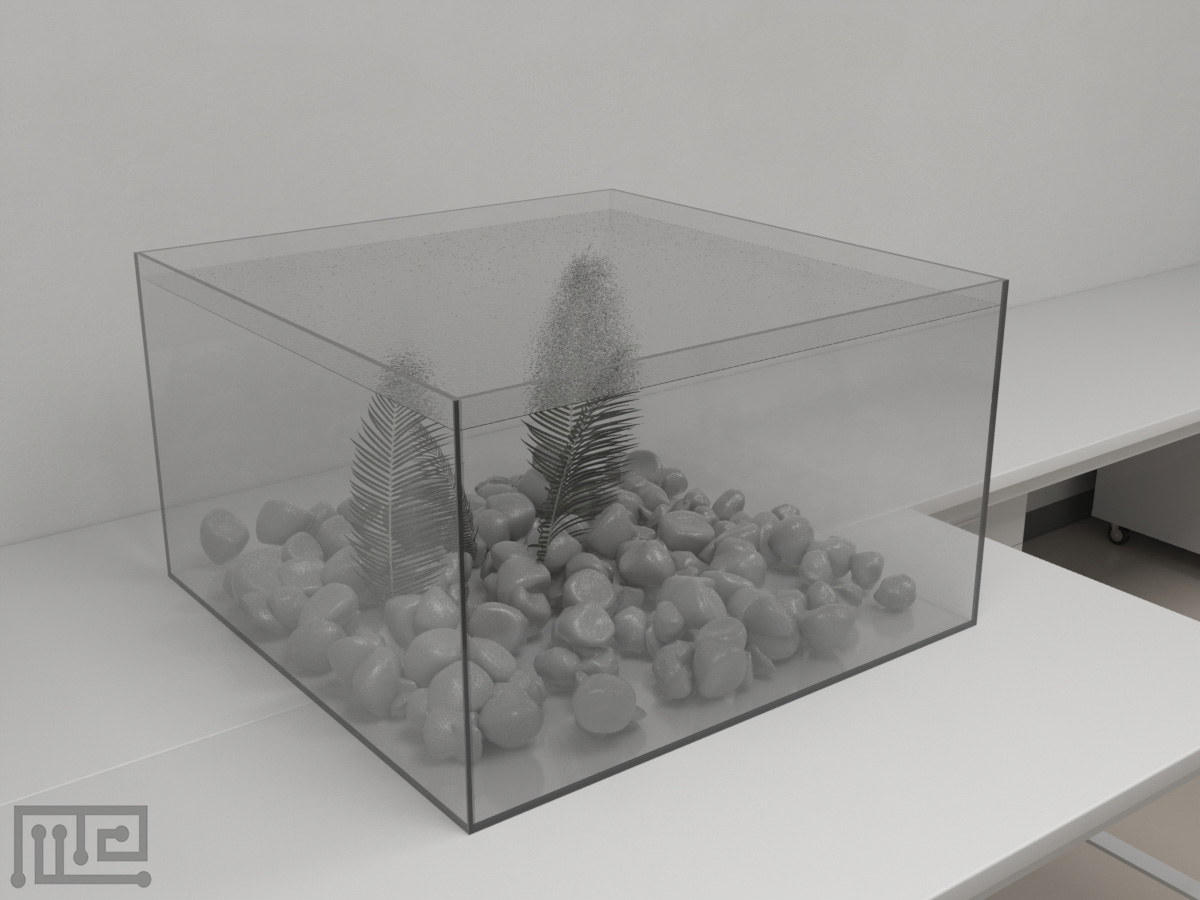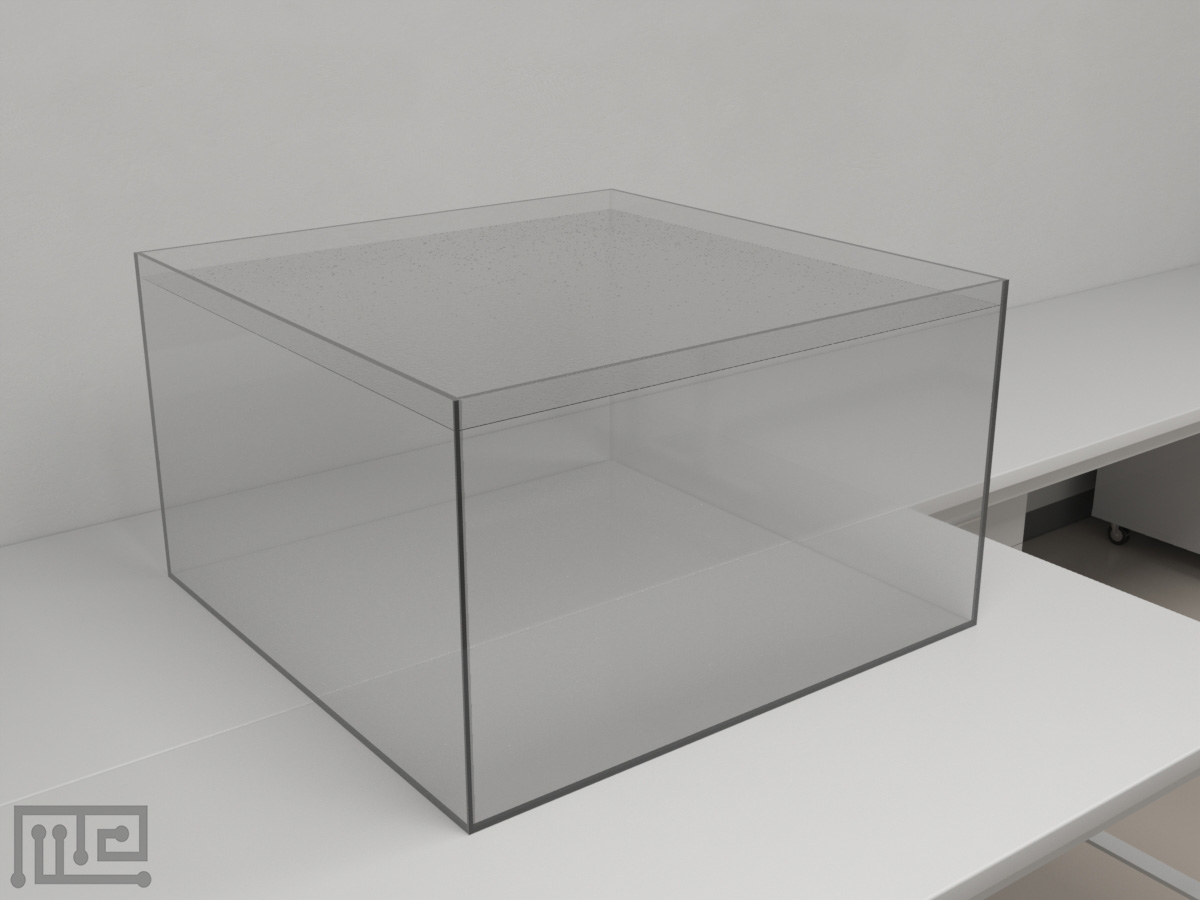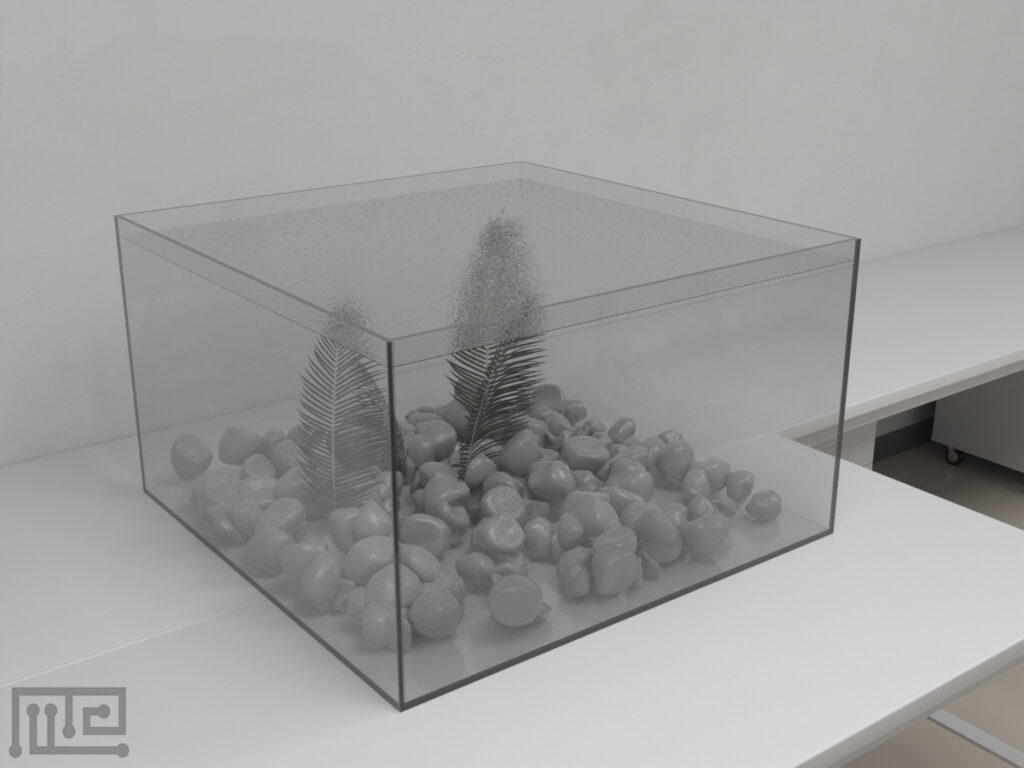The Fish Arms Maze was used in an experiment by Dana L. M. Campbell et al. (2018), to demonstrate that environmental enrichment promotes neural plasticity and cognitive ability in fish.
In the experiment, fish were randomly divided into three control or three enriched tanks and were held in these conditions for eight weeks. Control tanks were standard, plain hatchery tanks, whereas the enriched treatment tanks contained pebbles, cobbles and vertically floating plastic structures. The pebbles and rocks covered at least 75% of the base of the tank. They were large enough for the fish to move around and hide between. Eight plastic fronds were also added into the enriched tanks.
Mazeengineers offers the Fish Arms Maze.
Price & Dimensions
Fish 4 choice Maze
$ 990
+S&H- Length of outer start box: 17cm
- Length of entrance from start box: 8cm
- Length of barrier between start box and maze: 22cm
- Length of maze: 38cm
- Width of maze: 38cm
- Length of maze arms: 16cm
- Width of maze arms: 7cm
Documentation
Introduction
The Fish 4 Choice maze is used to study spatial learning and memory in fish. It consists of a start box and four rectangular arms arranged in a row opposite it. The maze design provides the subject with four choices of which one leads to an exit out of it. Since social stimulus is usually considered as a reward, the exit of the maze can be attached to a shoal tank to motivate the fish to learn and solve the maze.
Environmental enrichment has been suggested to have a positive effect on fish behaviors by allowing them the opportunity to manage their environment and indulge in their natural behavior (Collymore, Tolwani, & Rasmussen, 2015). For fishes that are meant to be reintroduced into the wild, housing in an enriched environment can prove beneficial and could also possibly affect their cognition and other behaviors. The Fish 4 Choice maze provides the opportunity to test if the spatial learning abilities and behavior of fish are transformed when exposed to environment enhancements. A positive effect of enrichment can be observed with improved exit finding abilities. Additionally, the Fish 4 Choice maze also allows the investigation of brain functions and morphological changes in the brain associated with spatial learning and memory.
Apart from exploring spatial learning, the maze can help juvenile fish develop flexible behaviors that are important for post-release survival in captive bred fish. It can also be used to evaluate the effects of gene expression, brain disorders, pharmacological manipulations, and diseases and disorders on spatial learning and memory. Other apparatuses used in the evaluation of spatial learning and memory include the Zebrafish Y-Maze, the Salmon Y-maze, and the Zebrafish Environmental Enrichment Chamber
Apparatus and Equipment
The maze is made of opaque grey plastic and is placed in the center of a larger holding tank (100 x 100 x 60 cm). It has an outer start box (16 x 17 cm) with an 8 cm opening that opens into the middle area of the maze (38 x 38 cm). Four rectangular arms (16 x 7 cm) are arranged in a row on the opposite wall of the start box. The rectangular arms can be opened or closed to serve as the exit. A barrier, 22 cm in length, is placed between the start box and the arms to prevent fish from having direct visual contact while in the start box.
Training Protocol
Maintain a constant water temperature and pH value in the tanks. Flush the tank to remove waste every third day. Apply appropriate overhead lighting to the tank. A tracking and recording system such as the Noldus Ethovision XT can be used to assist with observations.
Habituation and Pre-training
Allow the fish to swim freely with all the maze arms open in the maze tank over the course of 2 days.
Fish 4 Choice maze task
Release the subject into the start box. Open the door of the start box after 3 minutes. Use opaque plastic paddles to encourage fish to leave the start box if 5 minutes of the starting time has passed. Close the start box door once the fish leave. Terminate trial once the fish exit the maze or 300 seconds has passed. Guide the fish outside the maze using paddles if it did not find the exit. Repeat the process once per day over the course of seven days.
Evaluation of the effects of environmental enrichment on neural plasticity and cognition in fish
Salvanes et al. (2013) investigated the spatial memory of juvenile Atlantic salmon (Salmo salar) that were placed in controlled and enriched environments. The controlled tanks were standard, plain hatchery tanks, while the enriched tanks contained pebbles, cobbles, and vertically floating fronds. The enriched tank mimicked the natural environment of fish and provided a place for the fish to hide and find shelter. The position of the enrichment items was changed once every week. Fifteen fish from each group were screened to compare the amount of time they took to locate the correct route out of the maze. It was observed that the enriched group made fewer mistakes when searching for the exit as compared to the controlled group. Further, the enrichment group also showed greater learning and improvement with each trial. Results indicated that an enriched environment during the rearing period has a positive effect on fish performance in a maze task.
Data Analysis
The following parameters can be observed using the Fish 4 choice maze:
- Time taken to leave the start box
- Time taken to the first dead-end
- Number of errors made
- Time taken to exit the maze
Strengths and Limitations
Strengths
The Fish 4 choice is used to test spatial learning and memory in fish. The Fish 4 Choice maze provides the opportunity to test if the spatial learning abilities and behavior of fish are transformed when exposed to environment enhancements. It can be used to evaluate different brain functions and gene expression. The Fish 4 choice maze can also be used to help juvenile fish develop flexible behaviors that are important for post-release survival in captive bred fish. The Fish 4 choice maze allows for easy acquisition and interpretation of data. It is easy to operate and produces reproducible results.
Limitations
Training of subjects is important when using the Fish 4 choice for assessment of spatial learning and memory. The desire of the subjects to exit the maze is an important factor in the Fish 4 choice maze. Presence of unnecessary stimuli may affect the way the subject performs the task. Tasks may also be influenced by age, gender, and strain of the subjects.
Summary
- The Fish 4 choice maze is used to test spatial learning and memory in fish.
- The Fish 4 choice maze consists of a start box and four rectangular arms arranged in a row opposite it. The choice arms can be closed or opened to serve as exits.
- The Fish 4 Choice maze enables application of different investigatory protocols.
- The maze can be used to evaluate different brain functions and gene expression, and the effects of different treatments on learning and memory.
- Training of subjects can influence the results of the experiment.
References
- Collymore, C., Tolwani, R. J., & Rasmussen, S. (2015). The Behavioral Effects of Single Housing and Environmental Enrichment on Adult Zebrafish (Danio rerio). Journal of the American Association for Laboratory Animal Science: JAALAS, 54(3), 280-5.
- Salvanes A.G.V., Moberg O, Ebbesson L.O.E., Nilsen T.O., Jensen K.H., & Braithwaite V.A. (2013). Environment enrichment promotes neuroplasticity and cognitive ability in fish. Proc Biol Sci 2013. doi:10.1098/rspb.2013.1331
Request a quote
"*" indicates required fields



